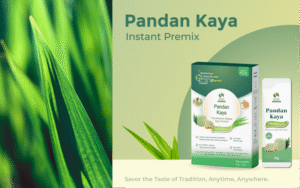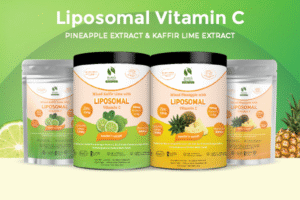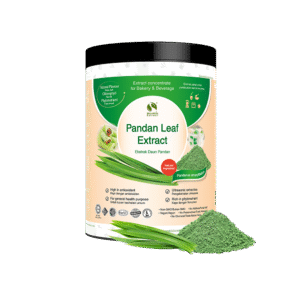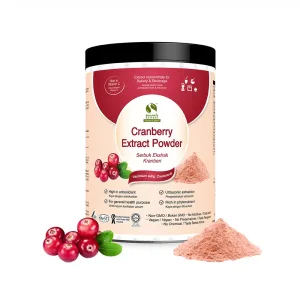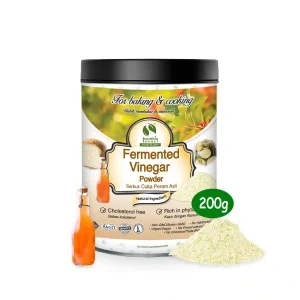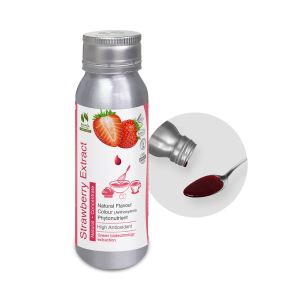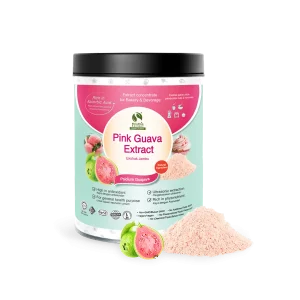Black Elderberry (Sambucus nigra, Adoxaceae)
Overview
Plants commonly known as elder belong to the genus Sambucus and consist of 20-30 species of deciduous trees and shrubs in the Adoxaceae, or moschatel, family. Sambucus species are native to forested temperate and subtropical climates and grow to an average height of 32 feet (10 m). Elder shrubs have light brown or gray stippled bark and narrow, dark green pinnately compound leaves with five to nine toothed leaflets. In early summer, elder plants produce flat to roundish clusters of tiny, cream-white, saucer-shaped flowers. Depending on the species, the clusters of small fruits, botanically characterized as drupes, are blue-black, black, or red (and rarely, yellow or white). The only elder species with a history of culinary use are those that produce blue-black or black fruits. Elder species are highly adaptable and readily naturalize in an area, making them potentially invasive outside their native range. This article will focus on the fruit of Sambucus nigra, commonly known as black elderberry.
Black elderberry is native to Eurasia and North America and has been naturalized in North America. American elderberry (S. nigra subsp. canadensis) grows throughout eastern North America, while S. nigra is found in warmer parts of Europe and North America and has several regional varieties and subspecies.
Historical and Commercial Uses
The common name “elder” is derived from the Anglo-Saxon word ald, meaning “fire.” The straight-growing, tough elder branches were hollowed out and used as blowpipes for kindling fires. The genus name Sambucus is derived from the Greek word sambuke, which translates as “musical pipe,” which refers to another product made from hollow elder branches. One of the most sacred elder tree instruments was and remains the long, hollow blowpipe used by Muscogee, Cherokee, Miccosukee, and Seminole medicine people to blow “special energies” into healing herbal formulas.
Within its native range, elderberry was highly valued as both food and medicine. Indigenous people ate the ripe berries, fresh and dried. “High-energy” pemmican cakes were made from pounded dried elderberries and other dried fruits mixed with wild game meat and tallow. In the spring, elderflowers were consumed fresh and dried for future use. The broad, flat umbels of elderflowers were battered and fried as a treat served with elderberry syrup and honey. In modern times, elderflowers are used to flavor cooked fruit, jams, and syrups. Unopened elder flower buds sometimes are pickled and used as a substitute for capers (Capparis spinosa, Capparaceae), while the opened flowers are used in cosmetics to reduce wrinkles, lighten freckles, and soothe redness.Elder shrubs often are mentioned in European folklore as having a healing aura and life-enhancing effects, such as increased longevity and vitality. During the Middle Ages, the elder shrub was associated with magic and witchcraft; people pinned leaves around all entrances to a house to ward off evil spirits and witches, and elder wood was used to make “magic” wands. Rarely struck by lightning, elder shrubs were considered protective and were planted close to houses and barns. Later legends attributed the “lightning-proof” quality of elder shrubs to the belief that Christ’s cross was made of elder wood. Elder twigs carried close to the body were priceless charms for good luck and good health. Versatile elder wood was used to make shoemakers’ pegs, butchers’ skewers, and needles for weaving nets, as well as whistles and blowpipes.
The medicinal use of the elder tree dates back to Europe in the fifth century BCE. Often referred to as the “medicine chest of the country people,” elder shrubs have a history of traditional use by herbalists in Europe and colonial America. The flowers were made into a tea, which was used topically as an eyewash to treat infections and internally to reduce fevers. Fresh elder leaves were laid near the head of a bed-ridden person to keep flies away, and elder fruit, flower, or leaf infusions were used topically to expel maggots from wounds of soldiers. Colonial women would prepare a rob (juice reduced to paste-like consistency) of elderberry juice with sugar and give a spoonful in warm water for cough and flu-like symptoms. Elderberry vinegars were used to disperse “tough, thick phlegm.” Elderberry has been included in numerous pharmacopeias, including Austrian, Dutch, German, Hungarian, Italian, Portuguese, and Swiss.
Ripe elderberries are a commonly recognized food and beverage ingredient, though the fresh fruits have an acrid smell and taste. In cooking, elderberries often are combined with other fruits like apple (Malus spp., Rosaceae) for making jelly. Elderberries commonly are prepared as a wine or used as a colorant and flavoring for wine and juices. The dried berries most commonly are prepared as a fruity, flavorful tea.
Fresh-pressed elderberry juice was used in folk medicine for sciatica and neuralgia, and as a purgative, diuretic, and diaphoretic. The dried and fresh berries were consumed as a tea or juice throughout the day to treat colds, sinusitis, influenza, and herpes simplex. For colds and other respiratory viruses, the treatment of choice was mulled elderberry wine. Due to its abundant anthocyanin content, elderberry also is used as a natural dye for foods and textiles.
Historically, the leaves, bark, flowers, and fruits of black elder all were used for their medicinal properties, but clinical evidence has focused mainly on the fruit. Despite its long history of use as a medicine, black elderberry was not included as an official monograph in the German Commission E, which was published at the end of the 20th century. In 2013, the European Medicines Agency did not establish a community herbal monograph on S. nigra fruits based on available information. More clinical evidence and pharmacological data are needed to support its therapeutic benefits.
Phytochemicals and Constituents
Elderberries contain an array of nutrients, including β-carotene, vitamins A and C, and B-vitamins thiamine (B1), riboflavin (B2), pantothenic acid (B5), pyridoxine (B6), biotin (B7), and folic acid (a form of B9).
Elderberries are an excellent source of flavonoids, which can provide protection against oxidative stress. The dark color of elderberries is attributed primarily to the presence of the anthocyanins cyanidin-3-O-glucoside (about 66% of the total anthocyanin content) and cyanidin-3-O-sambubioside (about 32% of the total anthocyanin content), both of which can be detected in plasma after oral intake of concentrated elderberry preparations. These anthocyanins are associated with antiviral and immune-stimulating effects. Anthocyanins are polyphenolic compounds that are difficult to absorb, and to produce beneficial effects systemically, anthocyanins must be absorbed from the gastrointestinal tract. Despite the low rate of absorption, there is evidence that even low quantities of anthocyanin compounds may modify oxidative stress biomarkers.
Other active constituents identified in black elderberries include flavonoid glycosides (e.g., rutin, hyperoside, quercetrin, and isoquercitrin), up to 1% anthocyanin glycosides (including cyanidin-3-O-glucoside, cyanidin-3-O-rutinoside, cyanidin-3-O-sambubioside), and traces of essential oil. The cyanogenic glycosides sambunigrin and prunasin are present in the bark, leaves, seeds, and raw fruits of elder shrubs.
Sambunigrin, prunasin, and lectins (Sambucus nigra agglutinin III [SNA-III] and type-2 ribosome-inactivating protein) are potentially toxic compounds that contribute to elderberry’s medicinal effects. The cyanogenic glycosides give elder fruit and flower its diaphoretic action, naturally reducing fever, increasing urination, and promoting perspiration, which increases the elimination of toxins from the body. Lectins are naturally occurring proteins found in plants (most commonly legumes and whole grains) and are bound to carbohydrates, making them more resistant to digestion and nutrient absorption. Research indicates that some lectins may cause agglutination of red blood cells and may promote the release of histamine from basophils and mast cells. These toxic and allergenic lectins are strongly associated with elderberry’s antiviral activities and potential antiproliferative effects.
Modern Research and Potential Health Benefits
Evidence for the traditional medicinal uses of elderberry for treating colds, constipation, hypertension, and edema has been documented in scientific literature. Black elderberry consistently has demonstrated antiviral and antioxidant activities in both experimental and clinical studies.
- Antiviral Effects
Worldwide, the influenza virus is one of the leading causes of morbidity and mortality with high potential to cause a pandemic. Cold and flu symptoms are typically treated with over-the-counter drugs, though prescription drugs such as oseltamivir, zanamivir, and peramivir sometimes are prescribed for verified cases of influenza. More often than necessary, cold and flu symptoms also are treated with antibiotics, despite their viral nature. This misuse of antibiotics contributes to antibiotic-resistant bacterial infections. Elderberry has been used extensively as a natural remedy against upper respiratory disorders like those associated with influenza.
Flavonoids are the major contributor of elderberry’s anti-influenza activity. Research indicates that flavonoids in elderberries can directly bind to H1N1 virus particles, thus inhibiting entry into human cells and preventing viral infection. Additionally, elderberry flavonoids can prevent the adhesion of the virus’ glycoproteins to cell receptors and block viral replication within the cell. Research also has confirmed that cyanidin-3-O-sambubioside isolated from elderberry inhibits the activity of influenza neuraminidase by blocking specific segments of the enzyme active site.
These research findings were the basis of developing Sambucol (PharmaCare US; San Diego, California), a syrup that contains 38% black elderberry standardized extract. Sambucol has been tested in several clinical trials, which have confirmed that Sambucol neutralized and reduced the infectivity of influenza viruses A and B, HIV strains, and strains of Herpes simplex virus type 1 (HSV-1).
Two randomized, double-blind, placebo-controlled studies have demonstrated the ability of Sambucol to effectively shorten the duration of influenza virus A and B infections when given to patients during the first 48 hours of the onset of flu symptoms. The first clinical trial included both children and adults (N = 27) who were given either Sambucol (n = 15) or placebo syrup (n = 12) daily for three days after the onset of symptoms. Adults received a dose of four tablespoons and children received a dose of two tablespoons. Patient symptoms were monitored for six days and blood samples were analyzed for the presence of antibodies to influenza A and B at the initial dose and again during the recovery/convalescent phase. Two days after the initial dose, 93% of the participants in the Sambucol group reported significant improvement in flu symptoms with 90% experiencing a complete recovery after two to three days. Immunological tests showed a higher level of influenza virus antibodies in the elderberry group, suggesting enhanced immune activity. The placebo group did not report improvement or recovery from flu symptoms until six days after onset.
A second clinical trial included 60 adult patients who experienced early symptoms of influenza. Patients were given either 15 mL of Sambucol or placebo syrup four times per day for five days. Symptoms were monitored over an eight-day period using a visual analog scale (VAS) for flu symptoms and self-assessment questionnaires. VAS values were significantly higher in the elderberry group than in the placebo group. The treatment group experienced “pronounced improvement” after three to four days of treatment, while the placebo group did not report any significant improvement in symptoms for seven to eight days.
Although based on the outcome of small clinical trials, data suggests that Sambucol can reduce the severity and duration of symptoms associated with influenza viruses by up to 50% when using the extract for three to five days. Both in vitro and clinical research findings confirm that the use of standardized elderberry extracts is a safe alternative to prescription drugs, including antibiotics, for uncomplicated cases of the common cold and influenza. In fact, elderberry has been shown to have a stronger inhibitory effect on the late-stage influenza cycle than on the early stage. Additionally, standardized elderberry extracts are substantially more effective at reducing symptoms caused by influenza viruses than upper respiratory symptoms caused by the common cold. Flu vaccination status does not significantly alter elderberry’s effects. The antiviral activity of elderberry’s flavonoids is considered comparable to that of a typical dose of oseltamivir and amantadine.
The action of elderberry is both direct (inhibits viral entry into cell, affecting post-infection phase and viral transmission from cell to cell) and indirect (modulates release of cytokines IL-6, IL-8, and TNF). Elderberry extract’s possible mechanisms of action in treating influenza may be attributed to its content of flavonoids, which protect cells from the effects of oxidative stress and stimulate the immune system by increasing production of inflammatory and anti-inflammatory cytokines by monocytes; and its ability to inhibit adhesion to cell walls and cell penetration, both of which are necessary for the virus to replicate.
- Anti-inflammatory and Antioxidant Effects
Elderberries possess potent antioxidant properties because of their polyphenol content, including phenolic acids and flavonoids. In clinical trials, Sambucol increased cytokine production and reduced inflammation in both healthy individuals and those with immunosuppressive viral infections.
Flavonoids, including anthocyanins, play an important role in enhancing the function of the body’s immune and inflammatory cells through the release of cytokines. Cytokines, such as interleukins, tumor necrosis factor α (TNF-α), and interferons, are proteins produced by immune cells, epithelial cells, and fibroblasts that enhance the body’s immune response by improving communication between cells and their external environment. Elderberry’s anthocyanins provide antioxidant protection by inhibiting the oxidation of low-density lipoprotein (LDL) cholesterol, which is associated with chronic illness. A variety of diseases are characterized by oxidative stress, including cardiovascular disease, neurodegenerative disease, cancer, autoimmune disease, and multiple sclerosis.
Elderberry has also been clinically investigated in a series of three trials for its blood lipid-reducing effects. Study durations ranged from one day to three weeks, and sample sizes for the trials varied from six to 34 healthy participants, none of whom were taking antioxidant supplements. A randomized, placebo-controlled study of 34 healthy participants (20 men and 14 women) was conducted to assess the effectiveness of low-dose powdered elderberry juice versus placebo on blood lipid profiles. Participants in the treatment group were given 400 mg capsules of powdered elderberry juice (containing 10% anthocyanins, equal to 5 mL elderberry juice) three times daily for two weeks while consuming a diet containing 35% fat, 20% carbohydrate, and 20% protein. Changes in blood lipid profiles occurred but were not statistically significant. Fourteen participants from the study continued treatment for one week, and LDL oxidation resistance was tested. Again, results were not statistically significant. Lastly, six participants in a crossover study consumed a high-fat breakfast along with a single dose of 50 mL elderberry juice. No differences in postprandial triglyceride levels were observed. Due to the low bioavailability of flavonoids, especially anthocyanins, in elderberry, using a larger dose of elderberry fruit anthocyanins may potentially elicit a greater therapeutic effect. Future studies should be conducted on patients with elevated blood lipid profiles, rather than healthy participants, in order to better track significant effects in the elderberry treatment group.
Consumer Considerations
Compared to other medicinal plants, black elderberry has not been extensively investigated as a monoherbal preparation. While some studies have yielded promising results, further research is warranted. When taken in recommended dosages, elderberry extracts are generally without side effects. Commercially produced elderberry fruit syrups are typically standardized to 30-38% elderberry with an adult dose equivalent of 15 mL two to three times daily for at least three days for acute viral infections. No adverse events have been reported in clinical trials of black elderberry fruit extracts. To date, there are no reports of adverse effects when used by pregnant or nursing women. However, safety has not been conclusively established. The use of elderberry is not recommended for those individuals on immunosuppressive drugs and corticosteroids due to elderberry’s ability to stimulate cytokine production.
While some reduction in elderberry fruit’s health-promoting compounds is inevitable when fresh elderberries are cooked to create syrups, it is a necessary step to enhance the safety and digestibility of these medicinally active fruits. In vitro research shows that the ripening process of elderberries is associated with a significant reduction in the fruit’s lectin content. Toxic effects may occur from consuming unripe fresh berries or juice that has not been sufficiently heated or contains leaf or stem due to the presence of heat-sensitive cyanogenic glycosides. Cyanogenic glycosides are hydrolyzed to free cyanide in the gastrointestinal tract, and can cause nausea, vomiting, and diarrhea. Cooking or drying elderberries reduces the content of cyanogenic glycosides as well as any adverse effects associated with lectin proteins.
Toxicology reports associated with elderberry often are related to the consumption of large amounts of raw, unheated fruits (e.g., as a juice). The presence of cyanogenic glycosides in raw elderberries is higher when fruits are not ripe. Children consuming a few fresh elderberries may experience vomiting.
Although not common, a small percentage of the general population has a type-1 allergy to Sambucus nigra as indicated by a positive skin prick or radioallergosorbent test (RAST). It is possible that elderberry allergies may occur due to the presence of the lectin type-2 ribosome-inactivating protein and SNA-III in elder fruits and seeds. SNA-III appears to induce the release of IL-4 from human basophils, triggering the release of IL-3 and histamine.
Nutrient Profile
Macronutrient Profile: (Per 1 cup raw elderberries [approx. 145 g])
106 calories
1 g protein
26.7 g carbohydrate
1 g fat
Secondary Metabolites: (Per 1 cup raw elderberries [approx. 145 g])
Excellent source of:
Vitamin C: 52.2 mg (58% DV)
Dietary Fiber: 10.2 g (34% DV)
Very good source of:
Vitamin B6: 0.33 mg (19.4% DV)
Vitamin A: 870 IU (17.4% DV)
Iron: 2.32 mg (12.9% DV)
Good source of:
Potassium: 406 mg (8.6% DV)
Thiamin (B1): 0.1 mg (8.3% DV)
Riboflavin (B2): 0.09 mg (6.9% DV)
Also provides:
Niacin (B3): 0.73 mg (4.6% DV)
Phosphorus: 56.6 mg (4.5% DV)
Calcium: 55.1 mg (4.2% DV)
Folate (B9): 8.7 mcg (2.2% DV)
Magnesium: 7.25 mg (1.7% DV)
DV = Daily Value as established by the US Food and Drug Administration, based on a 2,000-calorie diet.


